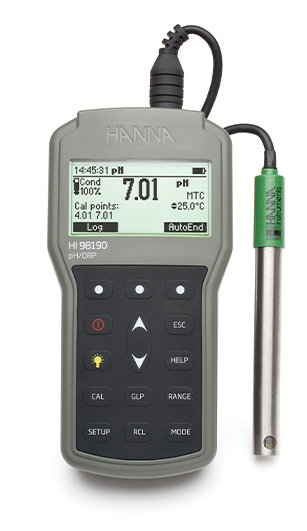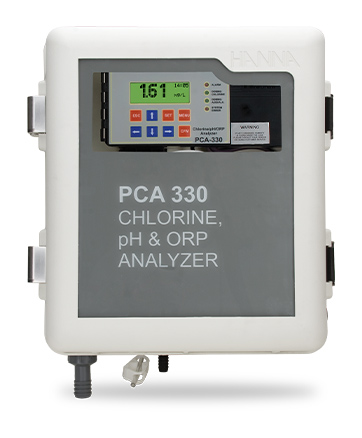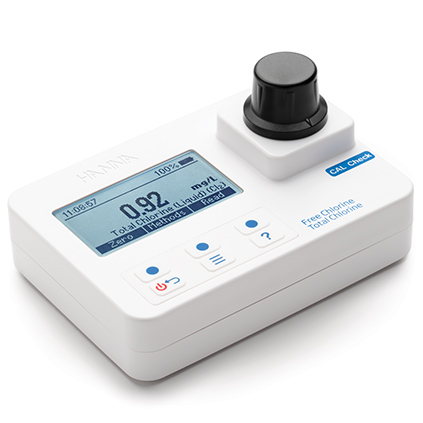Proper sanitation is the most effective way to reduce the contamination. Washing removes small particles that harbor fungi, bacteria, and other
contaminants. Most wash water is recirculated in order to conserve water and energy. The recycled water is known as process water. Organic matter and microorganisms will accumulate over time as process water is used. As a result, sanitation chemicals are widely used to enhance the effectiveness of wash water and to prevent cross-contamination from recirculated wash water.
Proper sanitation is the most effective way to reduce the contamination. Washing removes small particles that harbor fungi, bacteria, and other
contaminants. Most wash water is recirculated in order to conserve water and energy. The recycled water is known as process water. Organic matter and microorganisms will accumulate over time as process water is used. As a result, sanitation chemicals are widely used to enhance the effectiveness of wash water and to prevent cross-contamination from recirculated wash water.
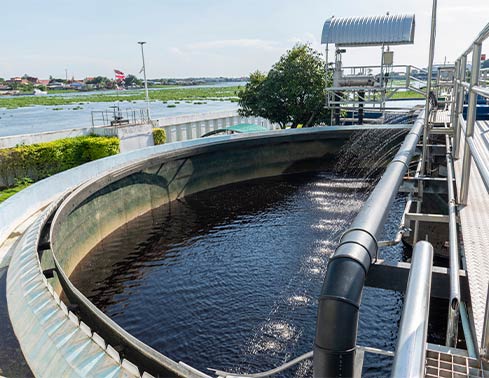
Chlorine is the most commonly added sanitation chemical.
All of the chlorine forms will dissociate to form hypochlorous acid (HOCl) and hypochlorite ions (OCl¯). Both of these forms exist in equilibrium based on the pH of the solution; but hypochlorous acid is more desirable in process water for its improved ability to sanitize. A pH between 6.5 and 7.5 for process water is ideal to maximize the presence of hypochlorous acid. If the pH is too low, chlorine gas will start to be released from the wash water, creating a workplace hazard and damaging equipment. If the pH is too high, the formation of the hypochlorite ion will be favored over the formation of hypochlorous acid, resulting in less effective sanitation.
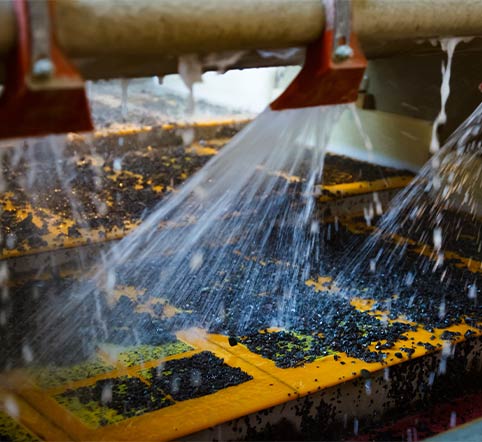
All of the chlorine forms will dissociate to form hypochlorous acid (HOCl) and hypochlorite ions (OCl¯). Both of these forms exist in equilibrium based on the pH of the solution; but hypochlorous acid is more desirable in process water for its improved ability to sanitize. A pH between 6.5 and 7.5 for process water is ideal to maximize the presence of hypochlorous acid. If the pH is too low, chlorine gas will start to be released from the wash water, creating a workplace hazard and damaging equipment. If the pH is too high, the formation of the hypochlorite ion will be favored over the formation of hypochlorous acid, resulting in less effective sanitation.
Sanitation efficiency of chlorinated wash water can be monitored with oxidation-reduction potential (ORP).
ORP measures the capacity of solutions to oxidize or reduce compounds. The ORP value of wash water has a direct correlation to required contact time to destroy or inactivate harmful bacteria. For example, an ORP value of 665 mV or above will destroy E. coli and Salmonella after less than 20 seconds of contact time. An ORP of 550 mV requires 60 seconds of contact time for the same level of disinfection. Since ORP can be measured rapidly both in-line and off-line, ORP is a convenient parameter for determining effectiveness, of a wash bath.
ORP measures the capacity of solutions to oxidize or reduce compounds. The ORP value of wash water has a direct correlation to required contact time to destroy or inactivate harmful bacteria. For example, an ORP value of 665 mV or above will destroy E. coli and Salmonella after less than 20 seconds of contact time. An ORP of 550 mV requires 60 seconds of contact time for the same level of disinfection. Since ORP can be measured rapidly both in-line and off-line, ORP is a convenient parameter for determining effectiveness, of a wash bath.
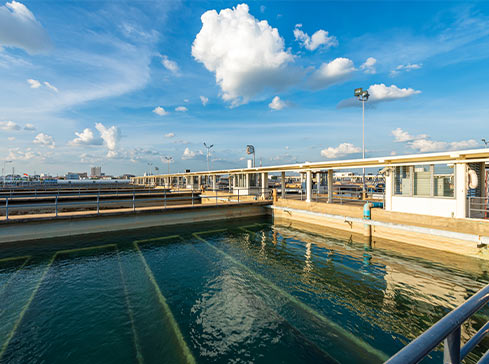
Similar to a pH measurement that quantifies the how acidic or alkaline solutions are, ORP (Oxidation Reduction Potential) measurements quantify the overall state of a solution as having the ability to oxidize or reduce a chemical species. Oxidizing and reducing reagents are used to participate in chemical reactions known as a redox reaction.
An important part of the ORP probe is to have a sensor that is chemically inert; meaning it cannot be oxidized or reduced itself. It must also have the proper surface characteristics to promote rapid electron exchange, a property known as high exchange current density. Two noble metals have proven to work well for this purpose: pure platinum and pure gold. Both are commonly used in the construction of ORP probes.
There are four basic types of ORP meters:
1. Pocket meters are the least expensive, small enough to fit in a pocket, and are reasonably reliable. Generally they need to be replaced after a year or two.
HI98120
ORP Tester
The HI98120 is a waterproof ORP and temperature handheld meter. The housing of this tester is completely sealed to protect against the intrusion of water and is also designed to float if accidentally dropped into a body of water. The HI73120 replaceable ORP electrode is a cartridge design with the stainless steel round connector. With this type of design there are no pins that can bend or break during replacement. The ORP electrode also has an extendable cloth junction. This type of junction allows for the renewal of the junction by simply pulling out 3 mm (1/8”) to clear any clogging which improves measurement response time and stability. The exposed stainless steel temperature probe on this meter facilitates a faster, accurate temperature measurement.
2. Hand‐held meters offer a high degree of accuracy and reliability and may also provide a temperature and/or pH check. The electrodes of hand‐held meters need to be replaced approximately every two years.
HI98190
Portable pH/ORP Meter
The HI98190 is a rugged, portable pH meter with the performance and features of a benchtop. This professional, waterproof meter complies with IP67 standards and measures pH, ORP and temperature. The HI98190 is supplied with all necessary accessories to perform a pH/temperature measurement packaged into a durable carrying case.
For the measurement of pH, the HI98190 comes with an HI12963 titanium body amplified pH electrode with a built-in temperature sensor for automatic temperature compensated readings. The titanium probe body is chemically resistant to aggressive chemicals and is virtually unbreakable. The HI12963 pH/temperature electrode features a newly designed Quick Connect DIN connector that provides a simple waterproof connection without any threads.
3. Process meters are mounted in a fixed location and provide continuous monitoring and recording of ORP readings. They are more expensive and most commonly used with automatic chlorine injection systems although they can be used when adding chlorine manually.
HI510
Universal Process Controller
HI510 is designed to adapt to a user’s unique process control requirements. The controller has a large backlit dot matrix display for easy viewing and provides for an intuitive interface for setup options. The controller utilizes multi-color LEDs for easy viewing of the instruments’ status including relay activation, in alarm mode, or in hold status. All programming operations are done through the low profile vulcanized rubber keypad or using the RS485 connection to a PC operating the HI92500 Windows® compatible software.
- Digital input for pH and ORP probes
- Up to 5 relays for control and cleaning sequence
- Up to 4 analog output for control and monitoring
4. Automatic chlorine injection systems
PCA 330
If you would like to have fully automated ORP and Chlorine levels constant monitoring and automatic dosing system, we recommend PCA330.
PCA 330 series of chlorine, pH, ORP and temperature analyzers are microprocessor controlled, process analyzers which continuously monitor a sample stream for chlorine content, pH, ORP and temperature values.
These microprocessor-based process instruments can continuously monitor a sample stream for Free Chlorine or Total Chlorine content in the 0 to 5 mg/L range with a 0.01 resolution. The principle of operation is based on an adaptation of the EPA recommended DPD 330.5 method. Indicator and buffer reagent bottles are placed directly into the instrument case. Using a sampling period of 10 minutes, reagents need not be replenished for months. The reagent bottles are also visible through the transparent window. The operator can select the set point which will activate chlorine dosing when the measurement is below the set point. The alarm can be also set above or below the set point. The set point controls a relay which can perform proportional dosage with a user selectable delta from 0.1 to 5.0 mg/L
- Two separate selectable 0-20 or 4-20 mA signal output (PCA340 only)
- User-friendly interface simplifies setup and maintenance
- Monitors chlorine concentrations from 0.0 to 5.0 ppm
- Monitors ORP readings
- Monitors pH readings
- Monitors temperature
- Data can be logged and transferred to a PC
- Alarm
- Specialized chlorine pump – up to 300 strokes per min
- Industrial quality pH & ORP probes
Advantages:
- Safe levels of chlorine is assured, dual control
- Constant monitoring pH and ORP
- Excellent purification results
- Minimum chlorine concentration is used to maintain proper sanitation
- Easy checking of logged data and events that occurred since u been gone
Chlorine levels
The purpose of adding chlorine to wash water is to keep the water potable, not to sanitize the product.
Chlorine can be used effectively to kill microorganisms present in wash water, but the effectiveness of chlorination depends on the following factors:
- pH of Water: Chlorine is most effective when water pH is between 6.0 and 7.5. Above pH, 7.5, little (<50%) chlorine exists in its active form and below pH 6.0, noxious chlorine gas can be released. This gas can be harmful to workers and makes the solution more corrosive to equipment and less effective for sanitation.
- Organic Matter: Any organic matter (leaves, soil, stems) present in water can reduce the effectiveness of chlorine. More chlorine is required to achieve the same level of control in dirty water.
- Contact Time: Lower concentrations of chlorine require a longer contact time to achieve the same disinfection as higher concentrations.
- Water Temperature: Water temperature has a lesser effect on chlorine effectiveness than the other factors. The guideline are to stick to lukewarm water.
Hot water can increase the corrosiveness of chlorine while cold water can keep the chlorine less effective.
All of the above factors will affect how much chlorine is needed to adequately control the quality of wash water. The following information provides general guidance for adding and monitoring chlorine in wash water and can be used as a starting point to develop operation specific procedures.
- Chlorine concentrations that are too high can damage the product and harm employees.
- Concentrations that are too low will not adequately control the growth and survival of microorganisms that cause spoilage and human illness.
Chlorine can be automatically injected by a system PCA330, and for periodical checking we recommend a portable photometer:
HI97711
Free and Total Chlorine
Portable Photometer
Portable Photometer
HI97711 is an advanced portable photometer for the measurement of free and total chlorine in water. This meter offers a superior optical system that utilizes a reference detector and narrow band interference filters for extremely fast and repeatable measurements.
- No warm up time before taking a measurement
- Tutorial mode for step-by-step instructions
- Uses either powder or cost saving liquid reagents
Author:
Nives Vinceković Budor
mag.ing.chem.ing.
Nives Vinceković Budor
mag.ing.chem.ing.

With Great Product Come Great Results


